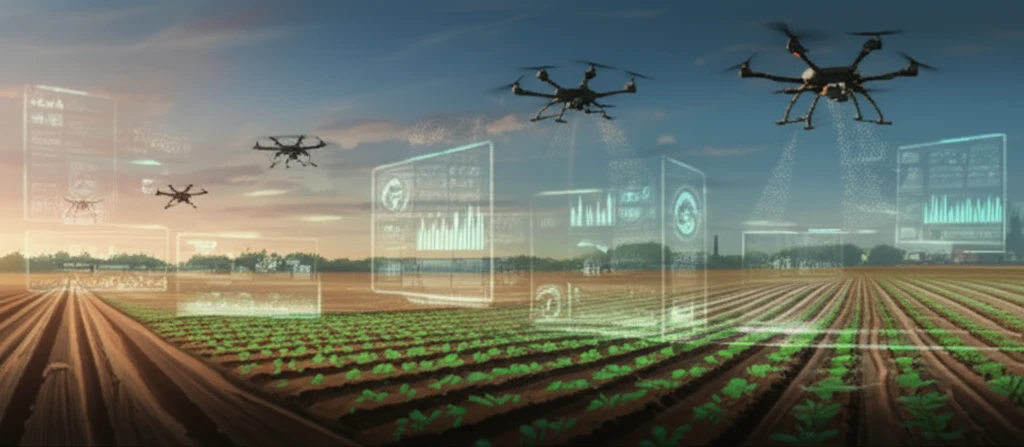
Agri-Tech Boom: How Science and Investment are Shaping Tomorrow's Farms
"From AI-powered poultry management to sustainable chemical alternatives, explore the cutting-edge innovations revolutionizing agriculture."
The agriculture industry is on the cusp of a technological revolution, driven by increasing demand for sustainable and efficient farming practices. Innovative solutions are emerging to address challenges ranging from resource management to optimizing crop yields and animal welfare. These advancements are fueled by strategic investments and groundbreaking research across multiple scientific disciplines.
This article examines several key developments that highlight this transformation, from the integration of AI in livestock management to the development of bio-based chemical alternatives and the creation of specialized agricultural technology hubs. By exploring these advancements, we gain insight into how science and investment are shaping the future of agriculture.
We will delve into specific examples such as Evonik's expansion into precision livestock farming, the rise of bio-based chemical companies, and the establishment of agrotech hubs designed to foster collaboration and innovation. Understanding these trends is crucial for anyone interested in the future of food production and the role of technology in creating a more sustainable agricultural system.
Precision Poultry: AI Optimizes Animal Nutrition with Evonik

Evonik Industries, traditionally known for its chemical expertise, is strategically expanding its presence in the agricultural sector through technology-driven acquisitions. Their recent acquisition of Porphyrio, a spin-off from KU Leuven, signals a significant move towards precision livestock farming. Porphyrio specializes in providing advanced software solutions that optimize nutrition for poultry producers, enhancing both animal welfare and production efficiency.
- Data-Driven Insights: Porphyrio's software provides poultry producers with real-time data analysis, enabling them to make informed decisions about feed composition and management practices.
- Improved Animal Welfare: By optimizing nutrition, Evonik aims to improve the overall health and well-being of poultry, reducing the need for antibiotics and other interventions.
- Increased Efficiency: Precision feeding strategies lead to improved feed conversion ratios, reduced waste, and increased profitability for poultry farmers.
Investing in Tomorrow's Farms
The developments highlighted in this article—Evonik's strategic acquisitions, the rise of bio-based chemical alternatives, and the creation of agrotech hubs—underscore a clear trend: agriculture is rapidly evolving under the influence of technological innovation and strategic investment. These advancements promise to enhance sustainability, improve efficiency, and address critical challenges facing the food production industry.
From AI-powered precision livestock farming to the development of novel crop protection methods, the future of agriculture will be shaped by those who embrace innovation and invest in solutions that benefit both producers and consumers. As the global population continues to grow, the need for sustainable and efficient farming practices will only intensify, making agri-tech an increasingly important area for investment and research.
By continuing to explore and implement innovative technologies, we can create a more resilient and sustainable agricultural system that is capable of feeding the world while minimizing its environmental impact. The journey towards a tech-driven agricultural future is underway, and the opportunities for innovation and growth are vast.
